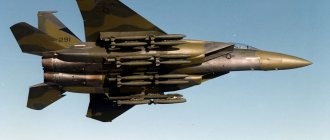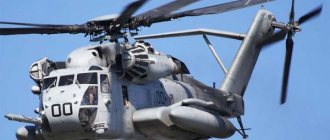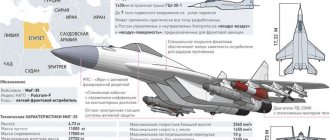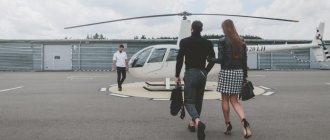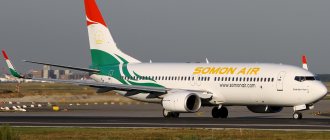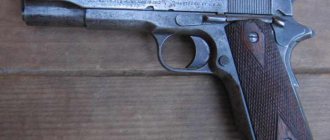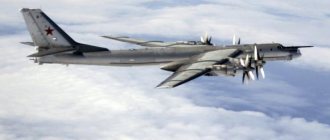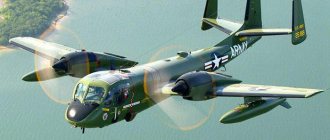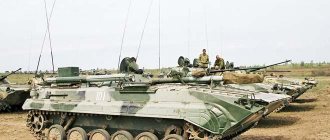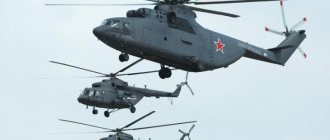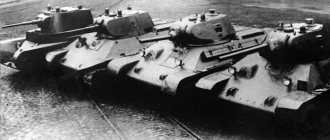Considering the state of affairs in military aviation in European countries over the past two decades, Western analysts note significant demand for combat and attack aircraft in this region of the world. At the same time, they note that the likely state of the European Air Force's fighter fleet will depend on a number of factors. Moreover, not only on the future military-political situation, but also on the technical and operational ambitions of states, as well as on their ability to reconcile the necessary financial expenses with their economic capabilities.
NATO strike aircraft in the skies over Estonia
Attack aircraft of various generations
About terms
. The concept of “combat” or “attack aircraft” used below is general for all types of aircraft suitable for air combat: fighters, fighter-bombers, attack aircraft, etc. The names of specific models are given in the text of the article and the table below.
For the purposes of analysis, experts used the division of aviation technology into generations, realizing that it is not indisputable. Nevertheless, this is a convenient method to roughly structure the chronology of the development of combat aircraft.
Third generation
. The oldest, but still in service in Europe, includes a relatively small number of Western-made aircraft F-4, F-5, AV-8B. This fleet also includes a relatively small number of Russian (Soviet) MiG-21 and Su-22 aircraft.
MiG-21 of the Romanian Air Force
Fourth generation
makes up the lion's share of machines in use today.
It, according to the study, forms the backbone of almost all fleets of attack aircraft. The diversity of their specimens ranges from those originating from the 1980s. the main variants of the F-15, F-16, F-18 to new projects such as the Eurofighter ,
Rafale
,
Gripen
E/F
or F-18E/F also referred to as generation 4+). Typical Russian representatives of this generation are the MiG-29 or Su-27.
Fifth generation
, according to Western experts, includes the F-22 and, above all, the F-35, as well as other aircraft integrating low-visibility (“stealth”) technologies. The latter include developments in Russia and China, which are currently at the final stage or have already been put into operation.
Sixth generation
. It quite generally refers to the fifth generation heirs, the design of which is just beginning in the USA and Europe, and, as expected, in Russia and China. Representatives of this promising group are expected to be put into service in the middle of this century.
Swedish Air Force strike aircraft "Gripen E"
Airplanes in the game War Thunder
Airplanes Var Thunder, in total there are five nations in the game: USA, Germany, USSR, Great Britain and Japan and three types of aircraft: fighters, attack aircraft and bombers.
The MMO War Thunder features a large number of famous aircraft. There is no point in considering each of them - you can familiarize yourself in detail in the game itself, but in general terms we will consider all the aircraft according to their purpose and key features.
In total, the game features five nations (USA, Germany, USSR, Great Britain and Japan) and three types of aircraft (Fighters, attack aircraft and bombers). First, let's look at each type of aircraft separately.
Bombers
The main goal is to destroy ground targets from a great height. To do this, he uses bombs.
- Very powerful weapons for destroying ground targets;
- Average speed;
- Poor maneuverability;
- Not bad armor.
For a bomber in War Thunder to be as effective as possible, your allies must gain an air advantage and push back their enemies. At the beginning of the battle, you need to identify the most important targets, establish their location and destroy them.
While studying the map, choose a bombing line, flying along which you will be able to destroy ground equipment without using maneuvers. Wait for enemy fighters to engage in battle, and only then strike.
War thunder planes USA
Americans are a very specific nation. The machines are difficult to operate and master.
- Huge speed (both plus and minus);
- Good weapons;
- Very survivable bombers;
- Low maneuverability;
- Extensive flying experience required;
- They quickly dive and retreat.
Development branch of the US Var Thunder aircraft:
War thunder Japanese planes
An interesting nation, with clearly highlighted pros and cons.
- Best mobility;
- They dive poorly from a height;
- Very low strength;
- Incredible flight range;
- Good weapons;
- Small bomb load.
Development branch of Japan Var Thunder aircraft:
Stormtroopers
The main goal is the destruction of ground equipment. To achieve this, the attack aircraft in War Thunder have both machine guns and ground missiles.
- Powerful weapons;
- Low maneuverability;
- Low speed;
- Good defense.
We take armor-piercing, high-explosive and incendiary cartridges for the machine gun.
Stormtroopers are conventionally divided into: full stormtroopers and multi-purpose ones. Their main differences are that a full attack aircraft is only suitable for destroying ground vehicles, while a multi-purpose aircraft can also act as a fighter. In order for it to successfully act as a fighter, it is necessary to either drop the bombs or not take them at all.
Estimation of quantitative needs
According to expert estimates, over the next two decades the need for new attack aircraft in the world is approximately estimated at 4 thousand aircraft. Their purchase is associated with financial costs ranging from 200 to 300 billion US dollars.
It is noted that such estimates contain a high degree of uncertainty. So the numbers are mostly just a testament to the size of the market, which has grown significantly over the past two decades. At the same time, a considerable share of this market falls on European countries, namely: EU member states, European NATO countries (including Turkey) and Switzerland.
According to studies, the listed countries are divided into three groups based on the nature of their needs. Moreover, such a division is not strict - and it is possible that one country belongs to more than one group.
1
. States that still have third generation aircraft. There is no alternative to exchanging these machines for new ones for logistical and operational reasons. Airplanes are at the upper limit of the horizon (term) of their use.
Their weapons are significantly outdated and their tactical capabilities no longer meet the requirements of future armed conflicts. These models lag significantly behind current and in-development technologies. In this regard, extending their useful life, as well as implementing programs to maintain combat value, are complex and disproportionately expensive.
AV 8B Harrier II fighters
2.
States seeking short to medium term replacement for older fourth generation aircraft. This does not apply to relatively new generation 4+ aircraft or F-16, F-18 and Gripen C/D, which have only been purchased (and will partially still be) as replacements for older aircraft, and therefore still have a significant horizon applications. Most likely, only the old F-16, F-18, MiG-29, Mirage and Tornado will be replaced by generation 4+ and 5 vehicles in the next 5-10 years.
3.
States that are seeking to replace new aircraft of the fourth and fifth generations, which still have a long service life, with the most modern combat aircraft. First of all, this applies to already purchased and ordered generation 4+ machines. These are added to the replacement of aircraft that will now or in subsequent years be purchased to meet the needs of countries in groups 1 and 2 (including fifth generation aircraft).
Review of the number of attack aircraft in European countries
Note The table illustrates the experts' reasoning. Data taken from open sources. But, according to the authors, in fact they have already undergone significant changes, as states began to respond to the needs of groups 1 and 2.
It is emphasized that the review (table) only demonstrates the number of aircraft referred to when mentioning the need to update the European Air Force. In addition, it is especially noted that the replacement of the older generation with the new one will most likely not take place in a one-to-one ratio.
The last remark is explained by a typical closed pattern that has existed in relation to combat aircraft for a long time. Its essence is that the limited number of vehicles in one generation leads to a growing need for a unified weapon system. The development of such a system leads to its increasing complexity and, thereby, to increased costs, which, in turn, lead to a further reduction in the number of next-generation aircraft.
Added to this is the fact that the sixth generation of combat aircraft is being developed as a combination of manned and unmanned systems. As a consequence, the number of manned aircraft will affect the extent to which other systems can participate in the execution of manned aircraft missions.
It is very likely that replacing the approximately 2,200 attack aircraft of generations 3, 4 and 4+ currently in service with European countries will not lead to the purchase of comparable numbers of new aircraft.
Generation 4+ attack aircraft "Rafal"
Long-range heavy bombers
Boeing B-17 "Flying Fortress"
In the mid-30s. The United States became interested in the creation of four-engine bombers. As a result, by the time of the attack on Pearl Harbor, the country had two proven designs - the Boeing B-17 Flying Fortress and the Consolidated B-24 Liberator - introduced into mass production with truly on an American scale. Suffice it to say that the Liberator became the most massive combat aircraft built in the United States during World War II! And already during the war, the “Superfortress” - the Boeing B-29 - was created, leaving all other heavy bombers behind. And not all fighters could keep up with it... In Great Britain, on the eve of World War II, the twin-engine Armstrong-Whitworth "Whitley" was considered a heavy bomber, but by 1942, a trio of four-engine aircraft had entered service, forming the basis of the power of Bomber Command - the Short "Stirling" ", "Halifax" and Avro "Lancaster". Thanks to the massive supply of four-engine bombers, the US and UK were able to conduct strategic operations quite in the spirit of the Douai Doctrine - from “1000 bomber raids” on German cities to area bombing of Tokyo and the dropping of nuclear bombs on Hiroshima and Nagasaki.
What about the other warring countries? In Japan, a completely unique idea of a “heavy” bomber was formed as a twin-engine machine with a scanty bomb load by European or American standards, but an enormous flight range necessary for operations over the Pacific Ocean. The development of such machines proceeded in parallel in two lines - for the army and for the navy, and naval aircraft had to be able to carry torpedoes. In the struggle for army orders, two companies competed: the Mitsubishi Ki-21 was replaced by the Ki-49, and that was replaced by the Mitsubishi Ki-67 Hiryu - probably the best Japanese bomber of the Second World War . But in the naval market, Mitsubishi reigned supreme, creating the G3M and G4M aircraft.
In Germany by the end of the 30s. There was a renewed interest in heavy bombers. On the basis of the four-engine passenger FW-200, its military modifications were created, although they distinguished themselves more in the field of naval reconnaissance rather than bombing. The promising heavy “bomber” Heinkel He-177 “Grif” turned out to be unsuccessful due to its unique, complex and unreliable power plant. Italy, trying to maintain the “brand” of one of the leading aviation powers, also adopted the four-engine Piaggio P.108 bomber, but it was used in scanty quantities. France in May 1940, literally in the last weeks before defeat, adopted the new four-engine bomber Farman NC.223.3, but it did not have time to take part in hostilities.
In the USSR, the logical replacement for the rapidly aging TB-3 armada should have been the new four-engine TB-7 (Pe-8) bombers, which at the time of their creation were in no way inferior to the American B-17. But for a number of reasons, only 93 cars were built. Therefore, on the eve of the Great Patriotic War, the basis of Soviet long-range aviation was the twin-engine aircraft DB-3, DB-3F (Il-4), and during the war they were joined by modified Li-2 transport aircraft, which at one time generally became the most popular long-range bomber aircraft.
The need for new quality characteristics
As Western experts note, since the time limit for the adoption of new combat aircraft that satisfy the three forms of demand described above extends beyond 2040, it is difficult today to assess which of the known technological trends will be strong and how strong during this period.
The same applies to the question of the advisability of purchasing now or in the near future combat aircraft of generations 4, 4+ and 5, as well as their adaptation to the requirements of a future air war in order to fully utilize the horizon of their combat use.
At the same time, experts mention five areas that over the next few decades will have a major impact on the combat effectiveness of strike aircraft.
Stealth, or limited emission signatures
The survivability (combat resilience) and combat effectiveness of future strike aircraft will depend on self-protection systems, effectiveness in electronic warfare and integrated radiation management.
Future self-defense systems must be extremely adaptable to external conditions. Stealth technology is essentially based on design features that can hardly be changed after the aircraft is manufactured. Therefore, it remains to determine the basic performance of combat aircraft self-protection systems.
US Air Force F-117 stealth fighter
In addition, what the “stealth” of the future aircraft will be like, as well as what compromises it will require in other areas of its capabilities, time will tell. Given the limited impact of the stealth effect on radar technology, the main focus will be on new, expanded capabilities in electronic warfare.
The third package of measures involves the so-called signature (emission) management. This refers to the use of integrated intelligence capabilities, ever more advanced onboard sensors and planning tools with growing computer power (on and off board). Their use must thus adapt the combat profiles (route, altitude, flight speed, tactics, radiation) of flying platforms in order to minimize the likelihood of their detection and destruction.
Compatibility and Interconnection
In the future, manned strike aircraft will be part of a mix of manned and unmanned systems. At the same time, manned systems must necessarily be able to control unmanned aerial vehicles (UAVs).
Even if it is assumed that flying weapons systems must operate autonomously to a certain extent, it is still expected that the full range of combat capabilities in this case can only be realized through an extensive network of interconnected structures. As a result, the network will become more important than the individual platform.
Based on this, in the future, attack aircraft must interact with as many types of systems as possible (including older generation ones). Consequently, technologies that in the long term will provide secure communications that are difficult to recognize (detected) by the enemy and resistant to electronic and cyber attacks are of particular importance.
Eurofighter as a network element
Sensors, data exchange and human-machine interface
According to experts, sensors on board advanced aircraft weapons systems, as well as on other platforms, must cover the entire electromagnetic spectrum with high resolution. The data received from them must be available in real time, since only in this case will they guarantee the creation of a complete picture of the situation and allow their own crew to make the right tactical decision in the shortest possible time.
This, along with the development of ever more powerful sensors and data fusion algorithms, requires determining how to effectively present the wealth of information to the crew. Here, just as in electronic warfare or the management of tactical and operational networks, new opportunities should be opened up by assistive systems based on artificial intelligence and virtual reality.
Hard times
Production of the Il-2 began shortly before the Great Patriotic War - in February 1941. Just in time for the new stormtroopers to go to war.
Il-2 attack aircraft of early series at the airfield parking lot (photo source)
It was a very difficult time - the enemy was successfully advancing, regularly driving our aircraft from one airfield after another. This could not help but create chaos both in supplies and in the way of action - it was necessary to “plug holes” often. At the same time, the enemy dominated the air, which led to serious losses.
The situation was aggravated by the evacuation of industry - the quality of the IL-2s produced, which were already not breaking records, fell sharply. Aircraft were often assembled by unskilled hands in terrible conditions - the roof of the plant was still under construction, and it was winter outside and minus thirty.
Naturally, the reliability of such IL-2s left much to be desired. Fortunately, there were sufficient advances in the design so that the aircraft assembled in this way could be operated at all.
Il-2 in the assembly shop of aircraft plant No. 18 named after. Voroshilova (photo source)
There were also problems in crew training. It was difficult, for example, to draw informed conclusions about the effectiveness of attack attacks and refine tactics in one direction or another. After all, at the beginning of the war it was mainly the Germans who were attacking and it was impossible to send a commission to the battlefield to collect accurate information.
Engine power and weapons
When looking at strike aircraft today, the conventional thrust-to-weight ratio underlies their speed, maneuverability, endurance and range. At the same time, it ensures an increase in the installation of electronic equipment that requires additional power and cooling facilities. Consequently, all this will continue to place new demands on engines in the future.
Already today, higher productivity is in demand at approximately the same or even reduced dead weight and specific fuel consumption. The bet is on adaptive cycle engines with variable bypass ratio ( Adaptive Cycle Engines, ACE
).
Their design allows them to alternately operate as either powerful turbojet or economical turbofan engines. New materials and manufacturing processes also provide the opportunity to further increase engine operating temperatures and therefore their efficiency.
Adaptive Cycle Engines
Promising aviation weapons
Over the past two decades, combat aircraft have primarily been involved in asymmetric conflicts. The resulting weapons requirements will also hold true in other future scenarios - especially in armed conflicts between equal, well-equipped opponents.
For example, high accuracy and scalable effect to minimize collateral damage will continue to be considered essential characteristics. The increasing emphasis today (once again) on mission capability in high-risk airspace will, among other things, result in stand-off capability becoming even more important. Long-range weapons provide the ability to attack highly protected targets with aircraft that do not have stealth equipment. New engines that enable hypersonic speeds increase the combat effectiveness of long-range missiles.
The real innovation in this area of aviation weapons would be the integration of lasers. However, according to experts, these weapons will only be able to displace guns and, perhaps, even short-range missiles, if the energy of lasers installed on aircraft can be raised much higher than that of their modern counterparts.
F-35 with laser weapons on board
How to add Messerschmitt
But the IL-2 could easily stand up for itself. He, of course, was not a fighter, but on occasion he could well shoot down planes - getting into the sights of an Il armed with 23-mm cannons was a bad idea.
On the same topic
The stormy retirement of World War II aircraft: what happened to Soviet fighters?
Having met with the Messers, the Il-2s (at least six aircraft) could form a defensive circle, so that each attack aircraft was covered by the next aircraft. And when the Germans did not show sufficient caution, they emerged from battles with fighters with plus or minus the same scores. In addition, the Il always had an ace up its sleeve - if necessary, it could slow down so sharply that the Bf-109 almost inevitably jumped forward, exposing itself to cannons and machine guns.
I shot down my first German near Odessa. Some fool has been caught. He attacked from behind, missed, did not calculate the speed, jumped forward out of fright and found himself right in front of his nose. I pulled the trigger, and he immediately collapsed. - said stormtrooper Grigory Cherkashin.
Some IL-2 pilots scored “ace” scores in less than five minutes. So, for example, pilot Danilov managed to shoot down three planes in five days in August 1942 - the 109th and 110th Messers plus the Ju-88.
The command knew about such capabilities of the Ila and at times, when there were not enough fighters (for example, at Stalingrad), did not hesitate to send them to intercept enemy bombers. At the same time, the pilots at least tried to work on them with volleys of rockets - well, what good is not to be wasted.
Il-2 in flight (photo source)
But still, the IL-2 was too clumsy to fight with fighters on equal terms. The further the matter went, the thicker the correspondence from the fronts became. The Ilov pilots demanded a shooter. The wish was eventually fulfilled - although not for free. They had to pay with a reduction in load and some deterioration in flight performance. But it was worth it - “communicating” with enemy fighters became much easier.
Possible solutions
According to Western analysts, to meet their demand for military aviation, it is advisable for European states to move in the following directions.
The needs of Group 1 states are aimed at preserving the basic viability of their attack aircraft fleet. Basically, it would be enough to purchase used fourth-generation aircraft. An example of this approach is Croatia's recent failed attempt to replace its MiG-21s with second-hand F-16s from Israel.
In contrast to the third generation, such aircraft (generation 4), along with more advanced tactical capabilities and improved compatibility with new fleets, offer, above all, a longer service horizon, even if they lag behind the aircraft newly manufactured in factories. For this reason, and because of the predictably high demand for obsolescence relief, nations such as Poland, the Czech Republic or Hungary have opted for newly manufactured F-16s or Gripen C/Ds, despite their higher cost and possible significant reduction in quantity.
Almost all European users of early fourth-generation combat aircraft have Group 2 needs. At the same time, the market competition for the only representative of the fifth generation (F-35 https://invoen.ru/vvt/f-35-lightning-ii/) consists of models of the generation 4+.
So far, the F-35 has won many competitions in its favor. In addition to the European F-16 users of the UK, Poland and Turkey, Norway, Denmark, the Netherlands and Belgium have decided in favor of the F-35. If the deal with Turkey is completed successfully, then, as experts note, the F-35 could become a hot commodity, similar to the F-16 in its time. However, new F-35 procurement figures remain significantly lower than those of its predecessor.
Features of generation 4+
So far in Europe, representatives of the 4+ generation cannot show comparable achievements. However, the Eurofighter has good prospects of winning the competition to replace the German Air Force's Tornado aircraft. Representatives of Airbus and Eurofighter GmbH, pointing to the advantages of the Eurofighter, in addition to the main purpose and significant development potential of the aircraft, emphasize that significant economic benefits can play in its favor.
"Eurofighter" of the German Air Force
Such benefits do not only stem from the standardization of Germany's attack aircraft fleet. They also arise during the development of a sixth-generation machine. Many of the quality features of future aircraft described above are platform independent. Consequently, they can mainly be tested on the Eurofighter as part of its continuous development program (development spiral), and can also be used for its further modernization.
The attractiveness - if not the necessity - of continuous development programs also arises for other models of combat aircraft, the horizon of which covers the time before the introduction of sixth-generation aircraft into service. In particular, additional modernization of the fifth generation F-35 is required to maintain its full tactical combat capability and logistics until 2040.
Obsolescence
The fight against obsolescence has already begun for both the 4+ and the fifth generation. The latter, due to the long periods of its development, technically does not look new for a long time.
Today, attack aircraft are primarily IT systems. For this reason, they are also susceptible to the short development cycles of this technology. The high degree of software integration makes it very difficult to limit the effects of a modification to just one sector of the entire system.
In addition, the required measures to preserve the combat value of generations 4+ and 5 are becoming considerable financial competition for the development of sixth-generation platforms. A solution to combine these efforts seems possible, but extremely difficult.
Work on the sixth generation
There are currently two development projects in Europe to meet the needs of Group 3 countries, like Germany, France and Spain under the New Generation Fighter program
), and the UK (
Tempest program
) are developing a sixth generation combat aircraft.
Despite efforts to consolidate the European arms industry, the presence of two projects independent from each other, on the one hand, leads Western experts to disappointment. On the other hand, they note that in the past, multinational weapons development has encountered particular difficulties in reconciling different timing and operational concepts, as well as the political and financial constraints of the participating countries. In this sense, fewer partners may mean quicker and more focused decisions or less harsh compromises.
At the same time, for such complex projects as the development of complex weapons systems, it seems advisable to create a solid foundation in the form of financially strong partners. Such associations provide realistic prospects for a sufficient number of sales.
Time will tell how successful this will be for both teams. Observers do not rule out that one day the projects will merge.
Sixth generation European attack aircraft
Wonder weapon
IL-2 quite often had to work on tanks. This was not an easy matter - hitting armored, protected targets was very difficult. And the designers were always trying to do something about it.
On the same topic
The restored Il-2 will star in the film
At first they wanted to replace the 23 mm guns with 37 mm NS-37. But a lot of inconveniences arose - the rate of fire was low, it was more difficult to maintain, and it was unsafe to fly. The recoil was very strong, and if one of these guns failed, the plane would turn sideways, which could send it into a tailspin.
But by the beginning of the Battle of Kursk, a better solution was found - PTAB, or anti-tank bombs. These were small cumulative bombs weighing one and a half kilograms. They were taken in containers of fifty pieces each - at one time they could cover an area of 15x200 meters. The top armor of the tanks was thin, and it was not difficult to penetrate it with a small bomb.
As a result, under good conditions, it was possible to cover several tanks or self-propelled guns at once - especially if they were in a column. The Germans, however, quickly recovered from the shock and began to disperse the tanks, paying, of course, for the convenience of managing units.
At the same time, the effectiveness of PTABs sank - but still stuck in the belt of any other weapon.
You carry 128 of them in hatches, and just imagine: for example, a column of ten tanks is discovered, and six attack aircraft approach this column along the road. The first one goes - sequentially unloads his four hatches, the second, the third, the fourth... six will pass - you look - two or three tanks are on fire, and here you have a successful combat mission. - explained one of the pilots.
PTABs also solved the problem of attacking a dug-in enemy. Previously, they even tried to install flamethrowers on the IL-2 for this purpose - but now there is no need for such noble madness. In addition, high-explosive bombs usually required a direct hit - with cluster PTABs everything was different: the dropped container conveniently covered the trench. There were fewer fragments, but in the cramped space of the trenches their number was not decisive.
